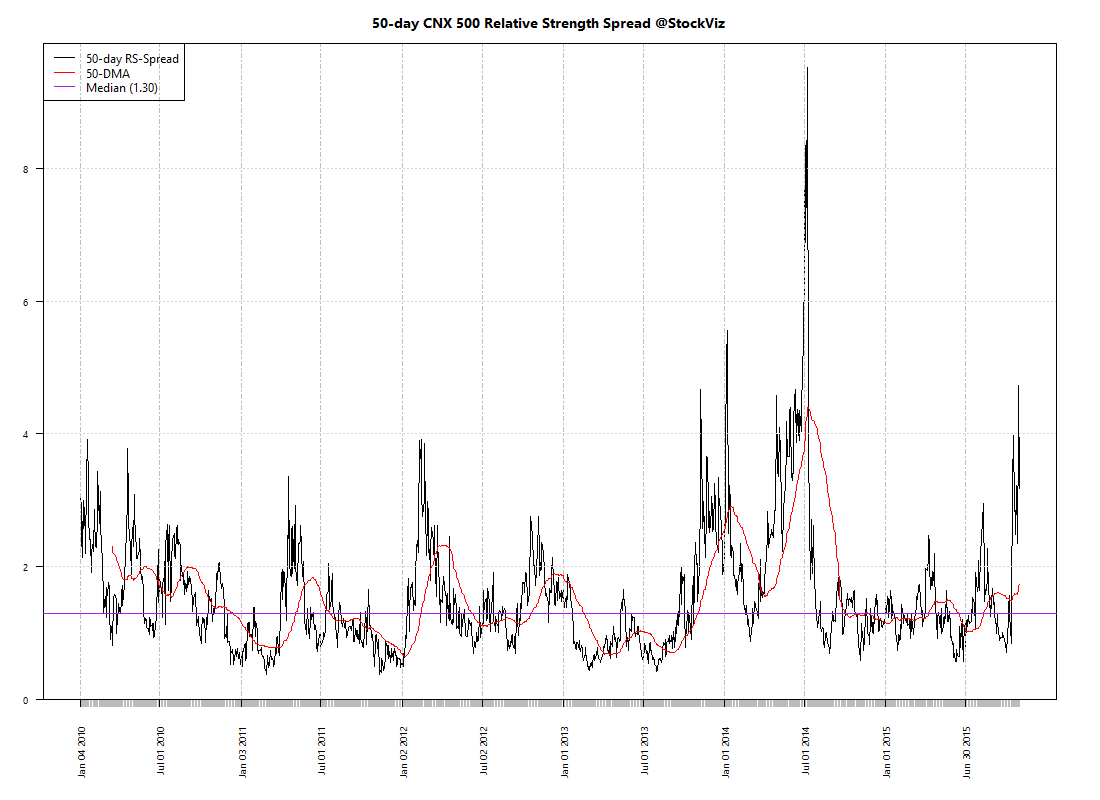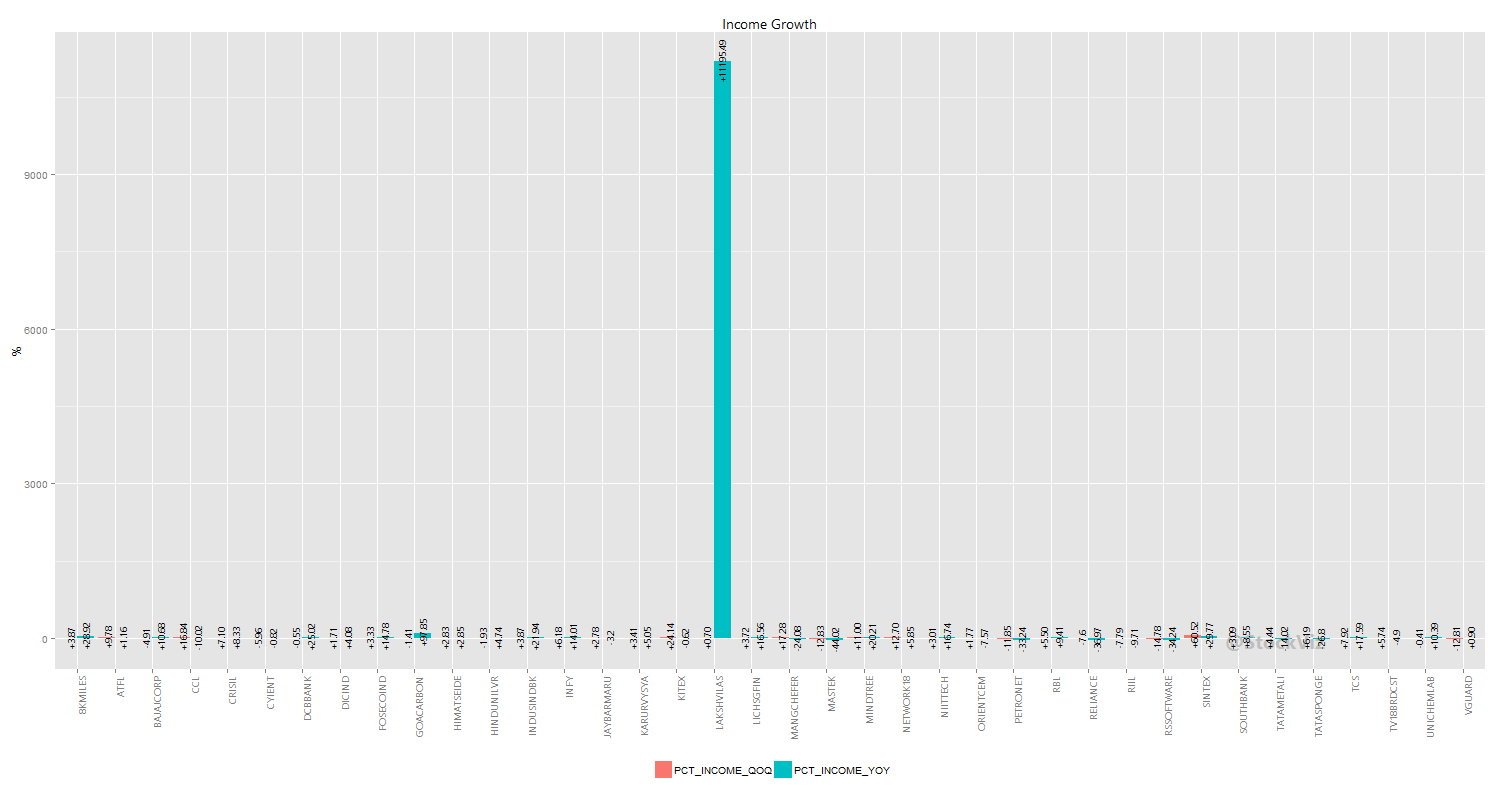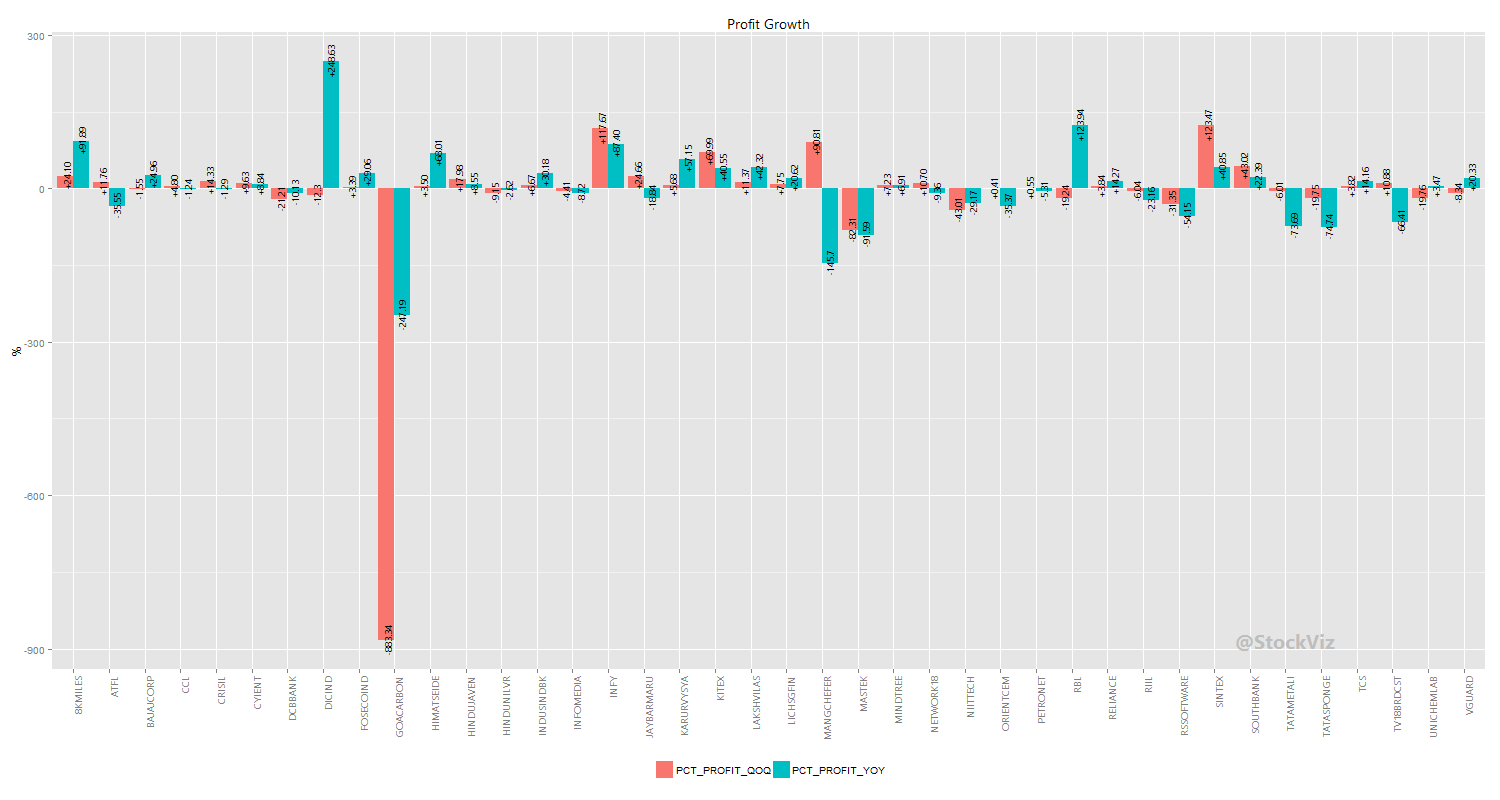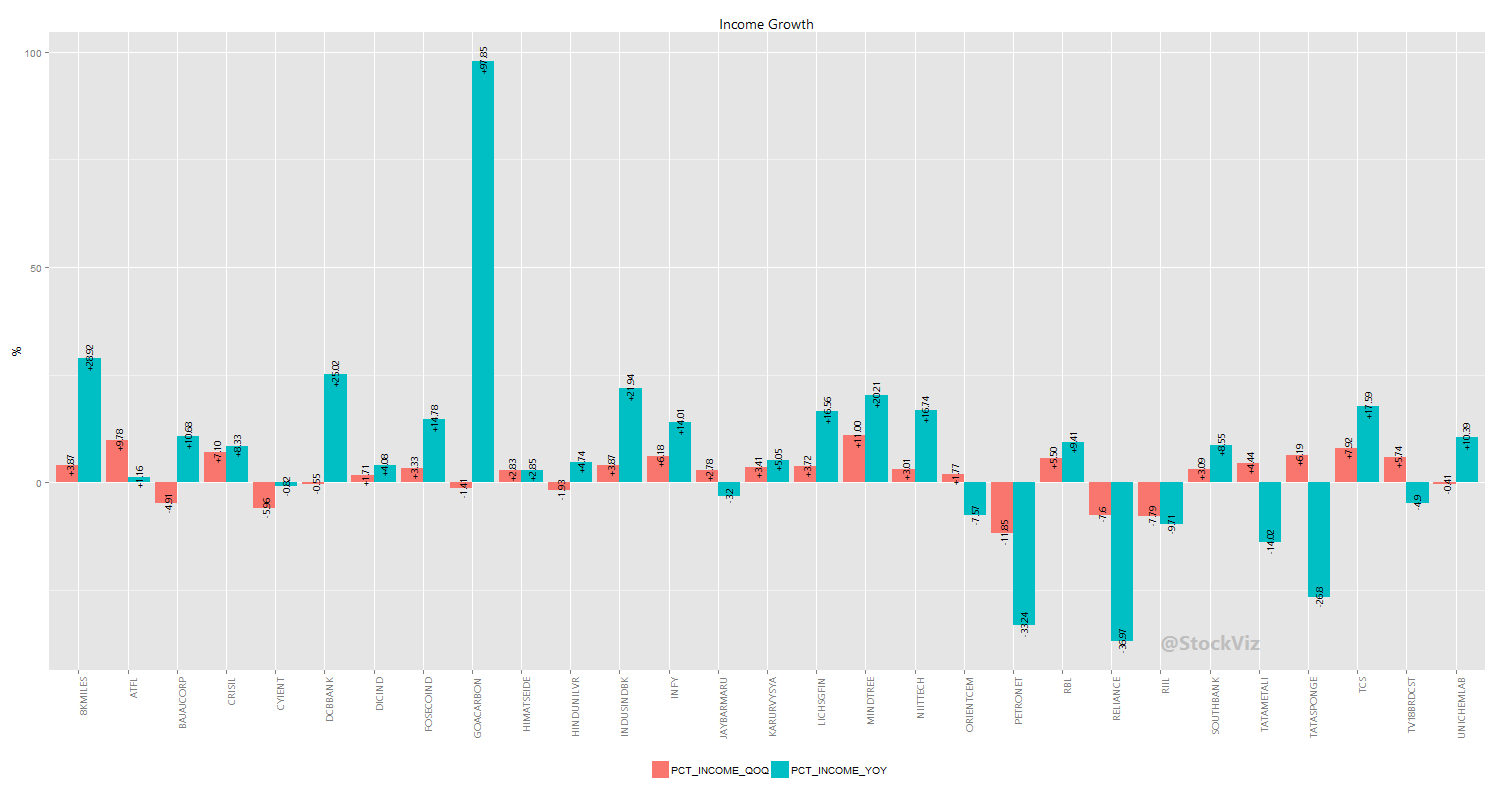MOMENTUM
We run our proprietary momentum scoring algorithm on indices just like we do on stocks. You can use the momentum scores of sub-indices to get a sense for which sectors have the wind on their backs and those that are facing headwinds.
Traders can pick their longs in sectors with high short-term momentum and their shorts in sectors with low momentum. Investors can use the longer lookback scores to position themselves using our re-factored index Themes.
You can see how the momentum algorithm has performed on individual stocks here.
Here are the best and the worst sub-indices:
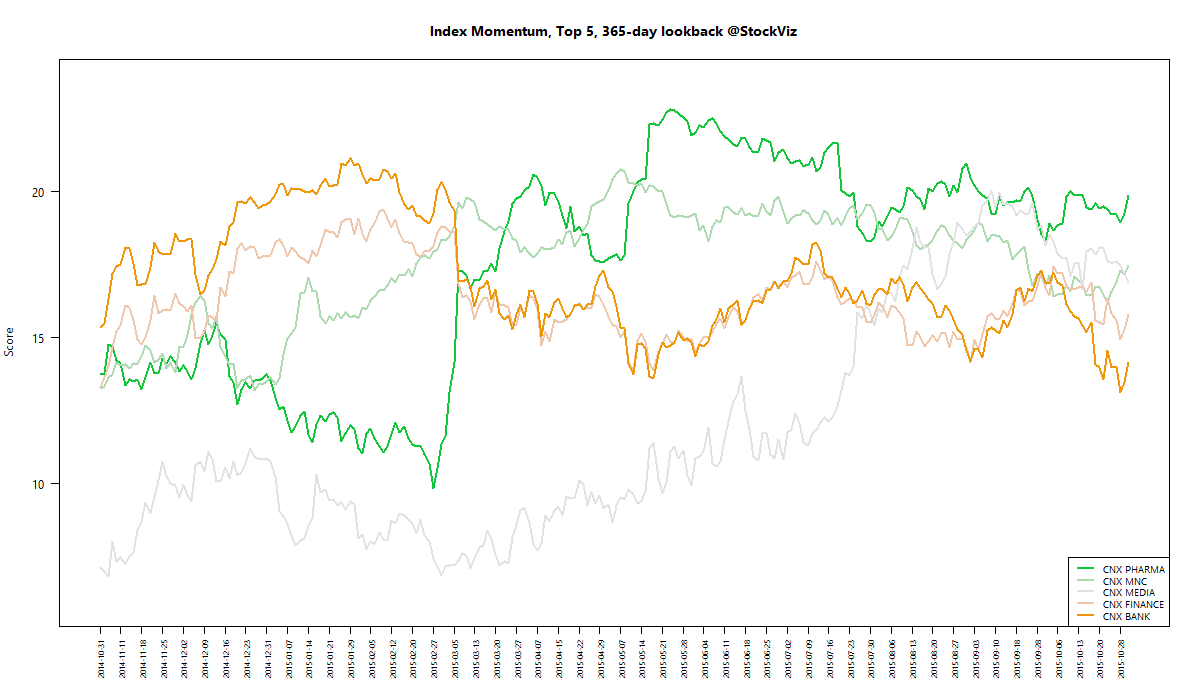
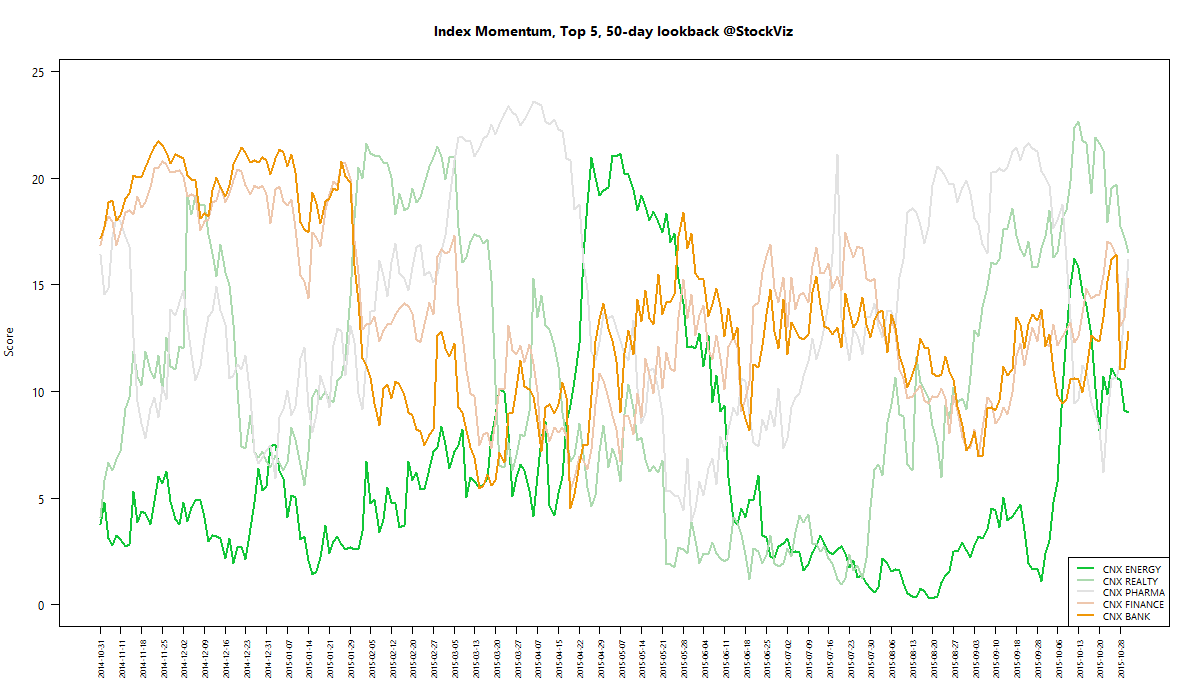
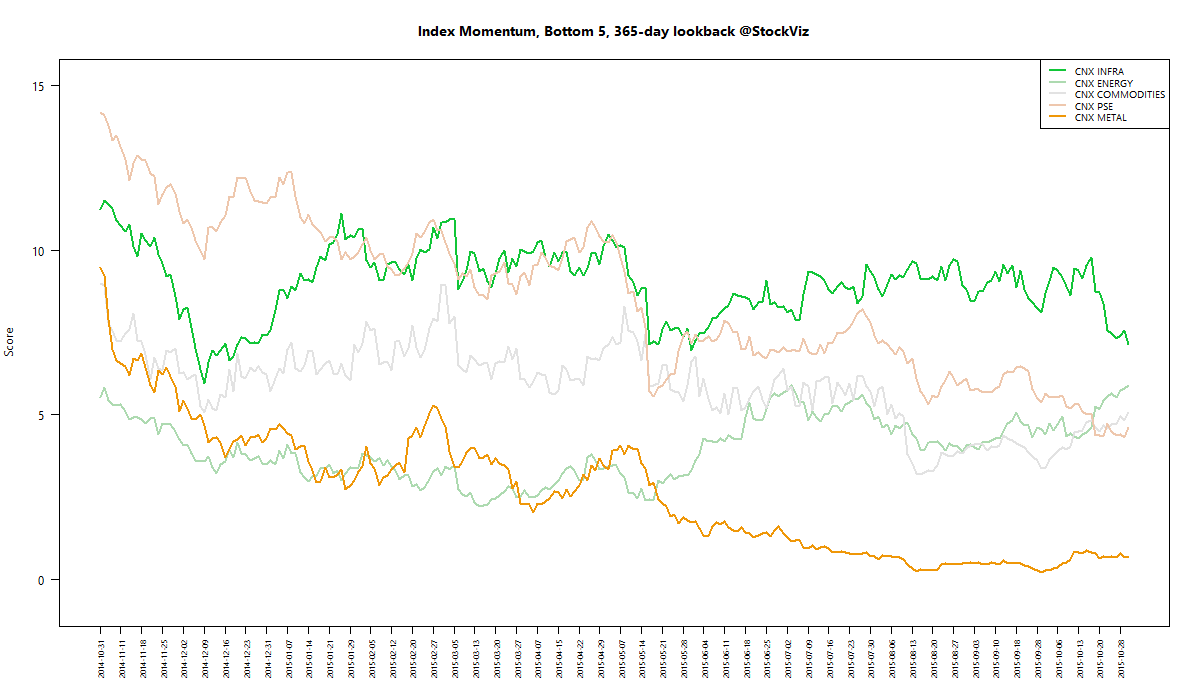
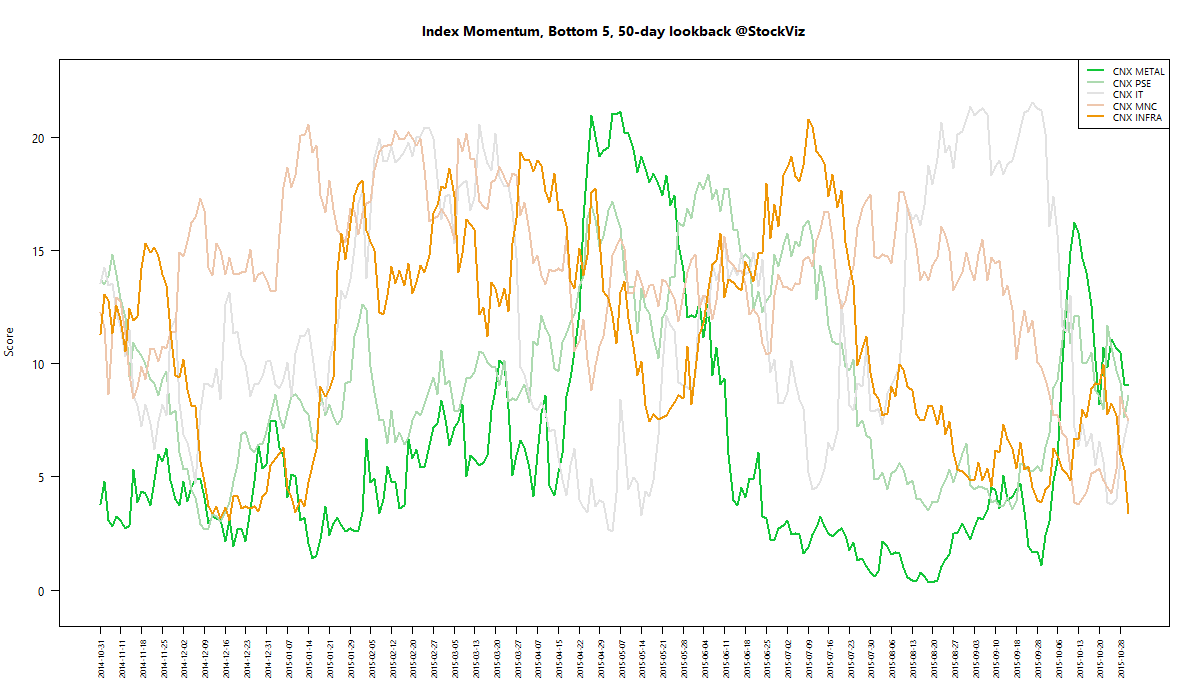
Relative Strength Spread
Refactored Index Performance
50-day performance, from August 18, 2015 through October 30, 2015:
Trend Model Summary
| Index | Signal | % From Peak | Day of Peak |
|---|---|---|---|
| CNX AUTO | SHORT |
11.07
|
2015-Jan-27
|
| CNX BANK | LONG |
15.57
|
2015-Jan-27
|
| CNX COMMODITIES | SHORT |
35.27
|
2008-Jan-04
|
| CNX CONSUMPTION | SHORT |
6.47
|
2015-Aug-05
|
| CNX ENERGY | SHORT |
32.57
|
2008-Jan-14
|
| CNX FMCG | LONG |
9.76
|
2015-Feb-25
|
| CNX INFRA | LONG |
54.74
|
2008-Jan-09
|
| CNX IT | LONG |
87.97
|
2000-Feb-21
|
| CNX MEDIA | LONG |
18.27
|
2008-Jan-04
|
| CNX METAL | SHORT |
67.13
|
2008-Jan-04
|
| CNX MNC | SHORT |
9.13
|
2015-Aug-10
|
| CNX NIFTY | LONG |
10.34
|
2015-Mar-03
|
| CNX PHARMA | SHORT |
4.78
|
2015-Apr-08
|
| CNX PSE | LONG |
34.72
|
2008-Jan-04
|
| CNX PSU BANK | LONG |
43.64
|
2010-Nov-05
|
| CNX REALTY | LONG |
90.63
|
2008-Jan-14
|
| CNX SERVICE | LONG |
10.93
|
2015-Mar-03
|
